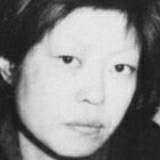
1945 - 2011
Hiroko Nagata
Summary
Name:
Hiroko NagataYears Active:
1972Birth:
February 08, 1945Status:
DeceasedClass:
Mass MurdererVictims:
14Method:
BeatingDeath:
February 05, 2011Nationality:
Japan
1945 - 2011
Hiroko Nagata
Summary: Mass Murderer
Name:
Hiroko NagataStatus:
DeceasedVictims:
14Method:
BeatingNationality:
JapanBirth:
February 08, 1945Death:
February 05, 2011Years Active:
1972bio
Hiroko Nagata was born on February 8, 1945, in Tokyo, Japan. She attended Chofu Gakuen High School and graduated with her diploma. After high school, she entered Kyoritsu College of Pharmacy to study and train to be a pharmacist. At college, she became very interested in politics, especially left-wing politics. This involvement became a major part of her life.
During her time at Kyoritsu College, Nagata became deeply involved in political activism. She worked full-time in leftist movements and eventually became the vice-chairman of the United Red Army. This group focused on revolutionary ideas and was known for its extreme views. While active in politics, Nagata was described as someone who could be very intense, often showing what was called "hysterical rage" when discussing political topics.
Nagata experienced health issues that affected her life. She was considered infertile during that time due to a condition known as Basedow syndrome. This health problem had a significant impact on her, and it also influenced her behavior towards others, particularly female members of her political group. She was known to be tough and critical of other women in her organization.
murder story
In February 1972, Hiroko Nagata and the United Red Army (URA) were hiding in a mountain compound in Gunma Prefecture. This group was under pressure from the police after violent protests. During their time at the compound, Nagata and URA's chairman, Tsuneo Mori, decided to carry out a violent purge of the group.
This purge resulted in the deaths of several members. Eight URA members and one non-member were killed through beatings. Additionally, six other members were tied to trees and left outside, where they froze to death in the severe winter conditions. Nagata was particularly harsh, targeting members she believed were not focused enough on the revolutionary goals. The violence escalated, and some members were killed for perceived disloyalties or minor offenses.
On February 16, 1972, police raided the compound and arrested Nagata, Mori, and several others. A few members of the group managed to escape, leading to a standoff known as the Asama-Sansō incident, but Nagata and many others were taken into custody.
Nagata faced trial and was found guilty of murder. She received a death sentence in June 1982, which was upheld by higher courts in subsequent years. While in prison, Nagata wrote several books and gained a following among supporters. However, her health declined due to a brain tumor, which went untreated for a time.
In 1984, she underwent surgery for the tumor. By 2006, her condition worsened, and she was moved to a medical prison. Ultimately, Nagata died on February 5, 2011, in the Tokyo Detention Center, ending her life after years on death row.